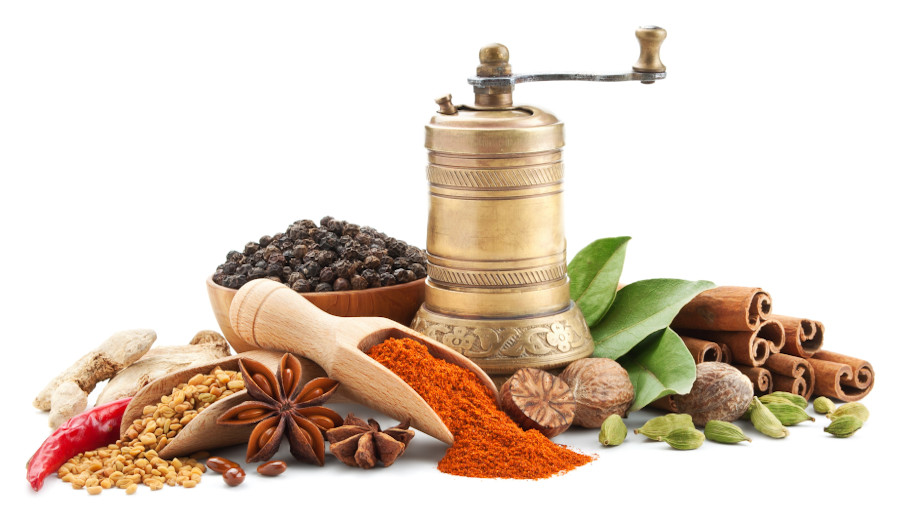Storing up food for a survival situation can be a little nerve-wracking. You’ll need to take care that your food is properly stored, at the right temperature, and that it doesn’t spoil. You’ll also want to make sure that it tastes good when you finally use it, and that can take some effort.
One way to ensure that survival food tastes good is to make sure that it has an adequate amount of flavoring. Salt and sugar are one way of flavoring, and storing large amounts of salt, sugar, and honey is a good idea. But if you really want variety in your cooking, you’re going to need to store herbs and spices.
Some herbs and spices can be grown yourself. Some are best fresh, while others can be dried or ground. And others come from tropical areas and need to be purchased ahead of time. So let’s break down the various categories.
Growing Yourself
Herbs and spices you can grow yourself can be broken down into two categories: annual and biennial, which have to be grown from seed every year or two, and perennials, which will grow in most temperate gardens for several seasons.
Annuals/Biennials
- Basil
- Caraway
- Celery Seed
- Chervil
- Coriander/Cilantro
- Dill
- Fennel Seed
- Garlic
- Hot Pepper
- Marjoram
- Mustard Seed
- Parsley
- Thai Basil
Many of these annuals have multiple uses. Hot peppers, for instance, are normally grown for their flesh, although the seeds can be used as a spice. Celery seed comes from celery plants, which are normally grown for their stalks. Coriander seed comes from the coriander plant that is normally grown for its leaves, known as cilantro. Fennel can be grown for its bulbs or its seeds, and dill and mustard can be grown either for their leaves or their seeds.
Many of these herbs grown for their leaves are best used fresh, like basil and chervil. Others, like dill and parsley, can still provide adequate flavor when dried.
Perennials
- Bay Leaf
- Chives
- Hyssop
- Lavender
- Lemon Balm
- Mint
- Oregano
- Rosemary
- Saffron
- Sage
- Tarragon
- Thyme
Perennial herbs will grow for years in most temperate climates in North America. Of these herbs, chives and rosemary are the ones best used as fresh herbs, while most of the others can be used in dry form. Some, like sage, are actually better used when dried. Drying can be done in the oven, in a food dehydrator, or in the sun, and can store for years.
Buying Elsewhere
- Allspice
- Black Pepper
- Cardamom
- Cinnamon
- Cloves
- Cumin
- Fenugreek
- Ginger
- Mace
- Nutmeg
- Paprika
- Star Anise
- Turmeric
- Vanilla
While some of these herbs and spices may be able to be grown in some areas of North America, finding viable seeds for them is going to be difficult. Others may only grow under certain climatic conditions, hence the reason they should be purchased from spice merchants.
Others, like paprika and turmeric, generally require being ground into powders, something that can be difficult to achieve at home. That’s why it’s generally best to stock up on those spices from stores.
While the list of potential herbs and spices can be far more exhaustive than this, this list can provide you with the basics you’ll need to cook a wide variety of meals from a wide variety of different cuisines. Many of these herbs and spices are readily available at stores and online right now in bulk, and can keep for a long time when stored properly. Don’t let yourself get caught without herbs, spices, and other food seasonings when you really need them. Start stocking up today.
This article was originally posted on Red Tea News.





